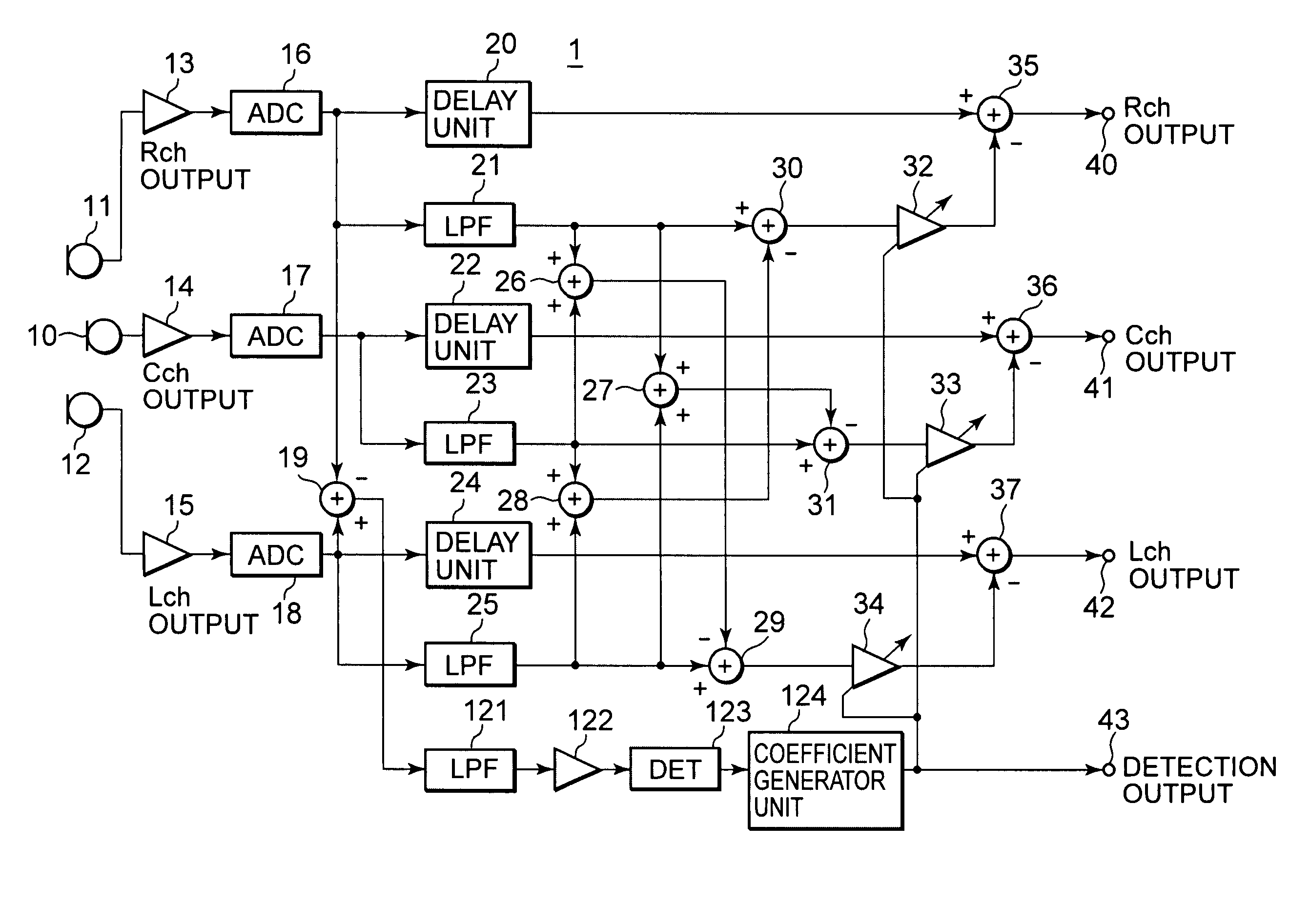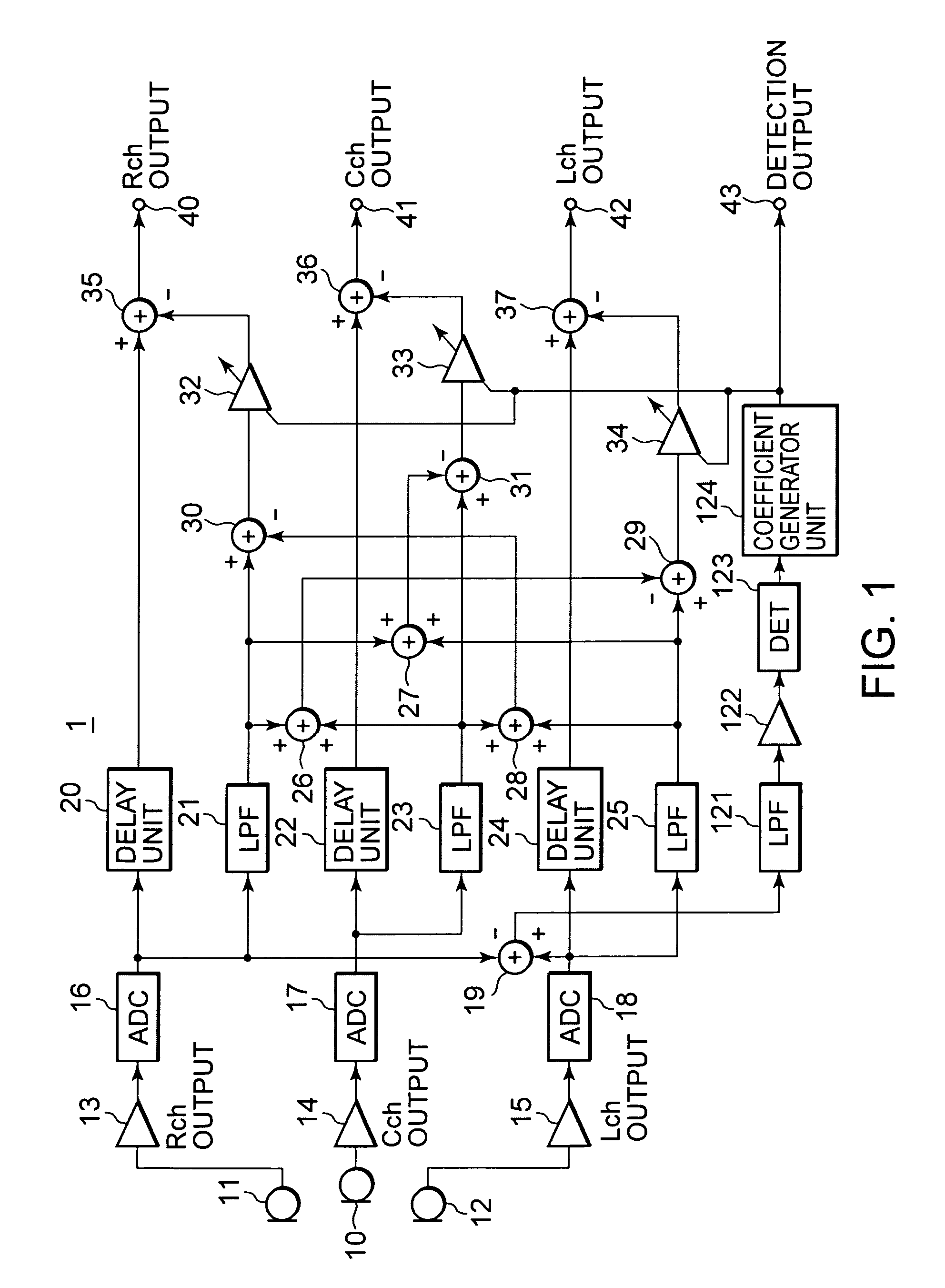Automatic wind noise reduction circuit and automatic wind noise reduction method
a technology of automatic wind noise reduction and wind noise reduction, applied in the direction of frequency response correction, electrical transducers, instruments, etc., can solve the problems of irritating and disturbing the listener, and cannot deal with the recording of audio signals having 3 or more channels, so as to effectively eliminate the wind noise signal
- Summary
- Abstract
- Description
- Claims
- Application Information
AI Technical Summary
Benefits of technology
Problems solved by technology
Method used
Image
Examples
Embodiment Construction
[0048]By referring to the accompanying drawings, an automatic wind noise reducing circuit and an automatic wind noise reducing method according to a present invention is described. First, in order to make the overall description easier, a frequency characteristic of a wind noise signal in a typical video camera (VTR of a type integrated with a camera), and an example of a conventional L / R two-channel wind noise reducing circuit are described.
[0049]Frequency Characteristics of Wind Noise Signals
[0050]FIG. 4 is a diagram showing an example of frequency characteristics of wind noise signals to be collected typically by a video camera. As shown in FIG. 4, a level of the wind noise signal increases following 1 / F characteristics (where F is a frequency) from approximately 1 kHz toward the lower frequencies.
[0051]However, because the level thereof decreases in an extremely low frequency depending on the characteristics of microphone units to be used or due to the influence of a coupling ca...
PUM
 Login to View More
Login to View More Abstract
Description
Claims
Application Information
 Login to View More
Login to View More - R&D
- Intellectual Property
- Life Sciences
- Materials
- Tech Scout
- Unparalleled Data Quality
- Higher Quality Content
- 60% Fewer Hallucinations
Browse by: Latest US Patents, China's latest patents, Technical Efficacy Thesaurus, Application Domain, Technology Topic, Popular Technical Reports.
© 2025 PatSnap. All rights reserved.Legal|Privacy policy|Modern Slavery Act Transparency Statement|Sitemap|About US| Contact US: help@patsnap.com



